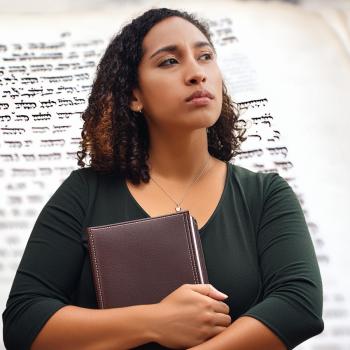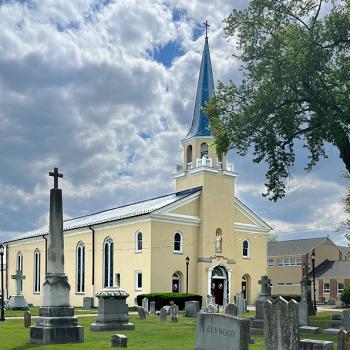One week I visited a Unitarian Universalist gathering. The next week I went to a Seventh Day Adventist church. The descriptions of the two churches are below the general comments. Further commentary may be found here.
General Comments
Similarities: both have seriously aging facilities, limited parking, little street visibility, mixed aged congregations, quite a few children involved and financial issues.
Differences: One has essentially no doctrine or boundaries and can pretty well include everything as a “sacred” text. The other has an extraordinarily distinctively doctrinal base. It is so counter-cultural that they have to form even their own equivalent to boy/girl scouts
General Facts
There are about 17 million Adventists worldwide with established churches in 215 countries. I was not able to find educational statistics for Adventists. They do have an established network of schools. Because they do hold to a literal six-day/new earth creation theology, they are probably as a rule less educated. Their religious beliefs affect every area of their lives.
There are about 200,000 UU’s and their demographic appears to be highly educated North Americans, with 25% of them having achieved a post-graduate degree. They are primary secular in outlook.
Divorce: 17% of UU’s are divorced. Seventh Day Adventists do not see divorce as an option.
Finances: the UU church I visited was officially out of money on that day. They were at zero, and asked people to pay their pledges. UU’s as a whole have a higher level of income than average Americans. The Adventist Church, although clearly filled with lower income people, also showed healthy giving for the year along with a slowly growing fund for a new facility. The Adventists as a whole contribute $134/year/person. Considering that many Adventists are in Third World countries, this is a hefty percentage of income coming to the church.
Now, onto the specifics:
Seventh Day Adventist Worship
Starting with the warm greeting of “Welcome, sister!” to the many wishing us a “Happy Sabbath,” my Saturday, August 1, 2016, worship at the Denton First Seventh-Day Adventist Church spilled over with delightful surprises.
The aging building features almost no parking. Twenty minutes before the 10:50 am service begins, what little parking they have is completely full. We park on the rough grassy area behind.
The small foyer off the front door teems with people, many in scouting-type uniforms. I introduce myself. The greeter makes sure I have an opportunity to meet the pastor, Rev. Derek Lazarus. I learn that we will experience a slightly different service. The youth music team from the Dallas-Fort Worth Fil-Am Seventh-day Adventist Church where Rev. Lazarus had previously served are leading the two-hour worship.
Concerned that we may have to leave early, we settle ourselves in a back pew of the small sanctuary. We slip in just as the Sabbath School time is ending. Within a few minutes, the room fills to capacity with an admirable ethnic and age mix of people.
The service begins with a “Good Morning” and this question, “Are you happy to be in the House of the Lord this morning?”
As the congregation gives assent to the question, a youth orchestra with musicians ranging in age from five to fifteen set up on the small platform and then play, “I Sing the Mighty Power of God.” After hearty applause, the congregation takes time to meet and greet one another. Many shake our hands and offer us the “Happy Sabbath” greeting, which I offer in return.
More than words, however, I also see a “Happy Sabbath.” Deep joy seems to permeate the morning as we move from praise to prayer. We are invited to kneel for part of the prayer time. No padded kneeling rails here–we go to the floor with its worn red carpeting that matches the pew cushions.
A great children’s message on the “In God We Trust” message found on currency leads into a time when the children themselves take up an offering for their ministry. They pass through the congregation multiple times. I enjoy seeing adults smilingly prepared to put cash and change in the cups each time a different child comes by.
Extensive time is given to announcements with particular focus on their Adventurers and Pathfinders ministries for children and youth. These programs appear to be similar to scouting programs. Adventists observe the Sabbath from sundown Friday to sundown Saturday. Many usual scouting activities take place then so Adventist children and youth are not able to join.
All older youth in the church-sponsored programs speak briefly of the life-changing power of these ministries. Every parent is encouraged to register their children.
An offering for the general fund as well as the building fund of the church follows. The youth choir/orchestra resume their place on the platform. We settle into hearing the program “A Joyful Sound,” directed by Dr. Nancy Cabansag.
Within seconds, I am caught up with the music and performance. The children stand with exquisite posture and trained presence. They sing and play song after song with good voice and practiced harmony. Chills run down my back as I hear those young voices lift these words in music, “Angels watching over me.” I know that they are right: angels are watching over them.
Half-way through the program, Rev. Lazarus speaks briefly from Psalm 128 on “Children are a Blessing.” He exhorts the parents to pour their lives into their children, acknowledging the difficulty of the task before them.
I know how much work goes into something like this. The children have memorized all the music and sing with great confidence. Each child/teen also plays a musical instrument. Children cannot do this without heavy parental investment, support and willingness to make sure each participant has prepared for practices.
We are all invited to stay for a pot-luck lunch afterwards. The pastor reminds the congregation to let the older people and visitors find seats in the fellowship hall. There is no question but that they need a new facility.
There is also no question that Adventists live in a distinctly counter-cultural manner. The vast majority of Christians see Sunday as the day of rest–and very few Christians actually observe a real sabbath anyway. Besides the observance of a Friday-Saturday Sabbath, Adventists abstain from alcohol and tobacco products and do not eat pork or other meats declared unclean by Levitical law. Many are vegetarians. Nevertheless they create a welcoming, child-centered community dedicated to living out their understanding of the Christian gospel.
The worldwide 17 million Adventists place particular emphasis on the imminent return of Christ, prophetic ministry, healthy living and Bible study. While I may disagree with certain elements of their theology, I am impressed with the way they practice it. And the nearly two hour service seemed only a few minutes in their presence.
Unitarian Universalist Gathering
It’s like putting your arms around a square of air and saying, “Define it.” You know there is something there, but it has no boundaries, no edges, no way to separate itself from the space around it.
That’s my mindset after coming from the from the 9:30 am Sunday gathering of the Denton Unitarian Universalist Fellowship, known as DUUF.
Early as usual, we park in a shaded spot on the street near the unkempt gravel lot. We watch casually dressed people, mostly fairly young and several with school-aged children, enter the building.
We open the steel door into a tiny foyer and wait patiently as a greeter fills out name tags for others. She turns to us. I give her my card and introduce myself and my companion. She mentions that the pastor, Rev. Pam Wat, is on a leave of absence and says, “You don’t want a name tag, do you?”
Agreeing to do without, we join about 40 others as we seat ourselves in one of the padded folding chairs on one side of the small room with perhaps room for 80.
The dated, 50’s style space features two glass walls, alternating clear, purple, yellow and gold panes, that look out over a messy hedge and some pots of dying flowers.
The 8” high stage on the unstained concrete floor host a lectern and two tables, multicolored tie-dye patterned drapes on them.
After welcome and brief announcements, a reading by Albert Schweitzer accompanies the lighting of the chalice. A poem by Lew Welch serves as the call to worship.
We stand together to sing, “Spirit of Life.” The children come forward, lining up on the hard floor or in the front row seats. They listen carefully as the speaker for the day, Michael Hennen, reads to them The Dark by Lemony Snicket. This story speaks of a little boy, Laszlo. He is afraid of the Dark which lives in the basement of his house but visits Laszlo at night. Ultimately, Laszlo makes friends with the Dark and the story ends well.
When Hennen finishes, two of the children help light the Religious Education Chalice as the congregation recites, “This is our chalice of love and of light. Uniting UUs by day and by night.” The adults sing the children out of the room for their educational time and we turn to a section called “The Wheel of Life,” Instructions: “For important marker events in life, deep joys and grief. No announcements of any kind, please.”
One person requests prayer for a forthcoming surgery. The leader, John Beckett, lights a candle for that request Someone else mentions something, but I am unable to hear over the sound of the air-conditioner. Several more candles are lit before we move to a time of silent prayer, meditation and reflection.
After a recording of Simon & Garfunkel’s “The Sound of Silence,” we hear a reading from Heather de Geests’s “The Negative Persona of Silence.” Ushers pass offering baskets and then Michael Hennon begins his reflection, “The Sound of Silence, the Color of Darkness.”
He begins his meditation by reminding us that to speak of the existence of silence must mean an acknowledgement of its non-existence as true silence does not exist. He spoke of the connection between darkness and silence and how many equate silence with loneliness and darkness with creepiness.
After mentioning several sacred texts that speak of the power of silence, Hennon gives evidence from the current field of neuroscience on the advantages of practicing silent meditation. Nonetheless, humankind today appears to be in need of constant chatter.
In a similar vein, he elaborates on the generalized human fear of darkness. It is reaching a point where it is difficult to find adequate darkness for good sleep and general health.
He ends his meditation with a quotation from “To Know the Dark” by poet and philosopher Wendell Berry.
We stand and sing, then read together these words by Elizabeth Selle Jones while the chalice light is extinguished, “We extinguish this flame but not the light of truth, the warmth of community, or the fire of commitment. Thee we carry in our hearts until we are together again.”
After a short benediction, we are invited to greet our neighbors and stay for a time of coffee and conversation. I enjoyed some time learning a bit about the Unitarian Universalist Pagans, a part of the Unitarian Universalist Fellowship.
The UU’s were formed as a place of tolerance and openness and grounded on the humanistic teachings of multiple world religions. Among other things, they value the worth and dignity of all as well as a free, unfettered search for truth. One of their goals is a world community characterized by peace, liberty and justice.
I walked away, aware of the broad base upon which they stand and their ongoing commitment to social justice and to care of the earth. It is possible that this broad base is what made it so difficult for me to find any defining lines or particular distinctives. This would be one of the strengths of the UU’s. I find it also to be one of their weaknesses.












